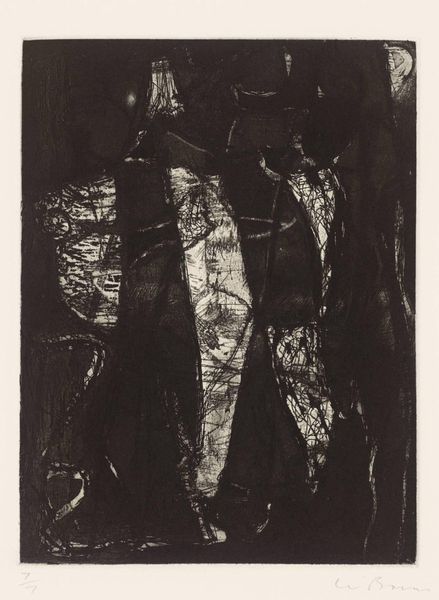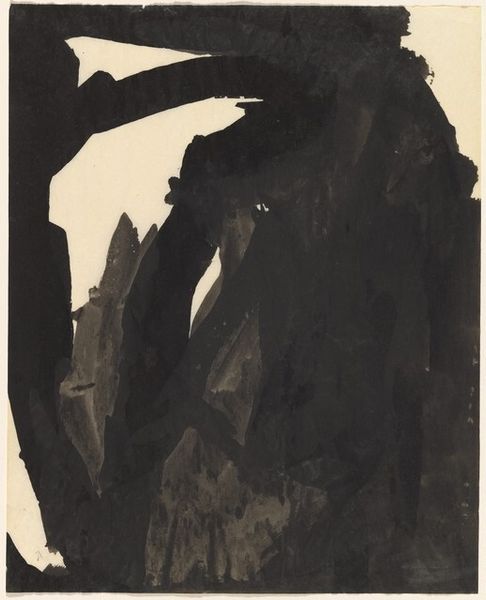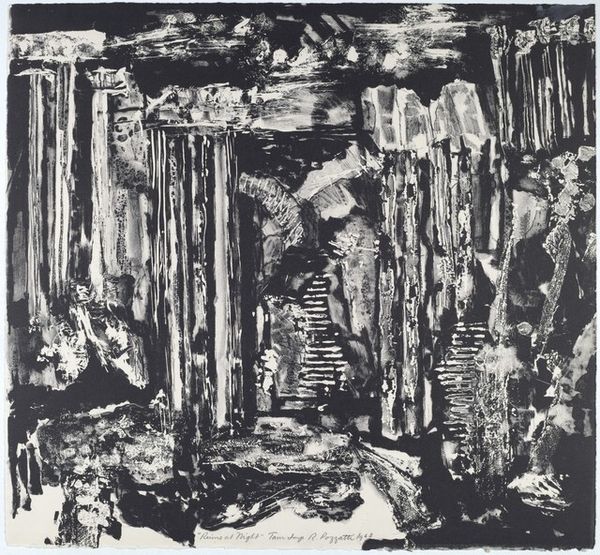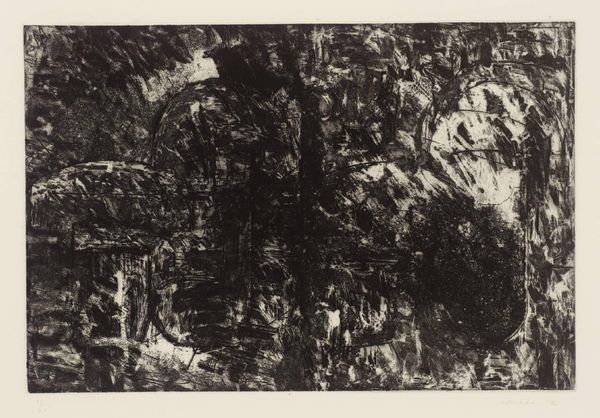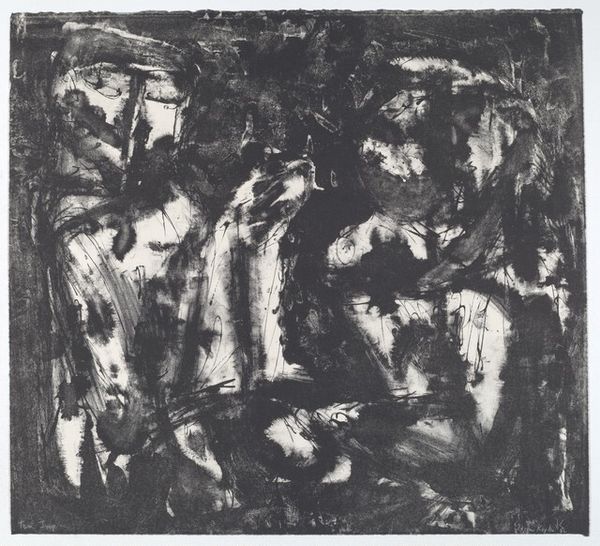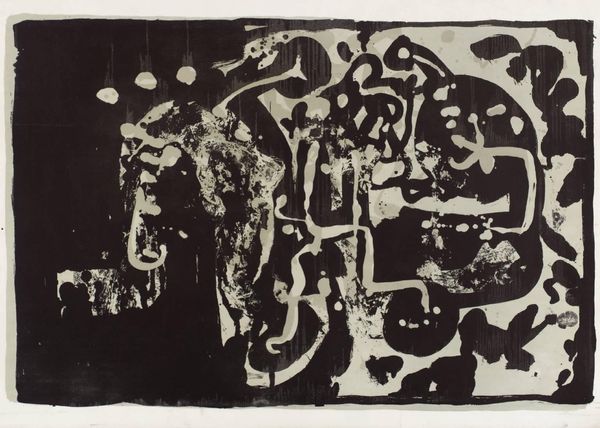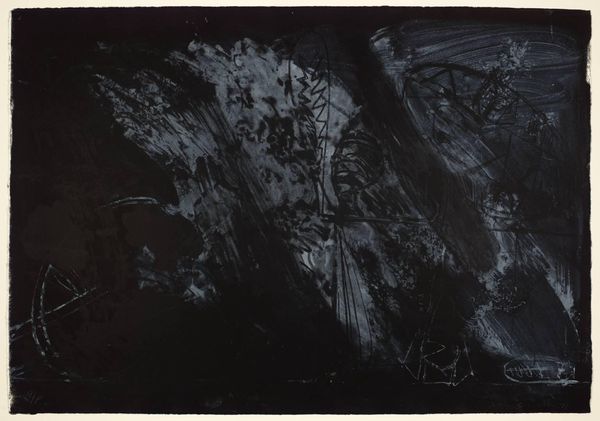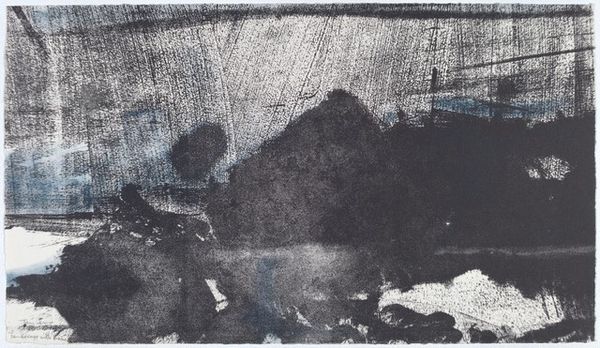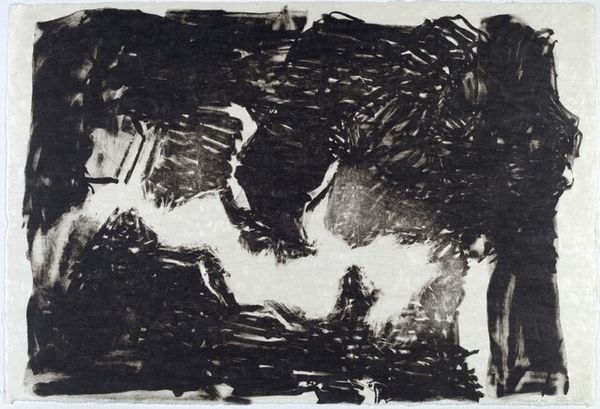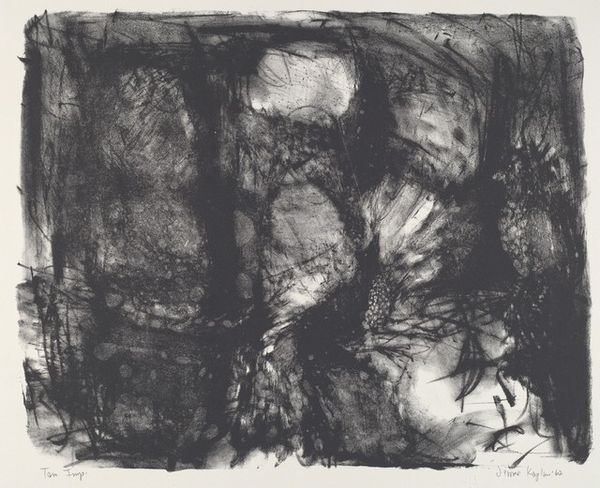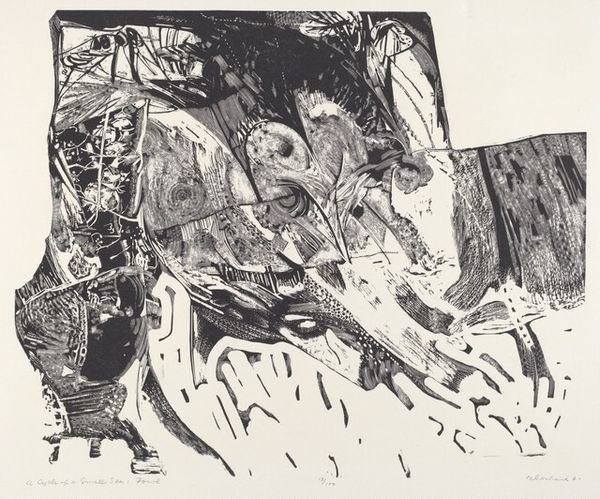
mixed-media, print
#
abstract-expressionism
#
mixed-media
# print
#
form
#
abstraction
#
line
#
monochrome
Copyright: National Gallery of Art: CC0 1.0
Curator: Here we have an abstract expressionist print, "Untitled," created by Esteban Vicente in 1962. It's a striking monochrome work in mixed media. What’s your first impression? Editor: Overwhelming. It’s heavy, feels almost claustrophobic, dominated by the deep blacks. I’m struck by how aggressively the ink has been applied; there is not room to breathe here. Curator: I see what you mean, and in the early 1960s, artists were really wrestling with the legacy of Abstract Expressionism and looking for new forms of expression and politics to work within their creations. Considering Vicente's background, born in Spain, then immigrating to the US during a politically fraught period, perhaps the darkness isn’t just aesthetic. Editor: Absolutely. We can explore Abstract Expressionism as more than a style of mark making if we want to. Could this also represent a kind of internal struggle reflecting sociopolitical conflicts during the Cold War? Where does that come up in terms of reception and readership, I wonder? Curator: I agree it may have wider cultural resonances and reflect social unrest! I'm struck by how Vicente manipulates line and form. He plays with figure and ground relationship, almost obscuring one into another. Is he using abstraction as a defense or maybe an attack? Editor: Possibly both. I think looking at its place within the Abstract Expressionist movement, you see both conformity, and nonconformity. Vicente engages with form, but he simultaneously disrupts expectations. There's a certain kind of intentional roughness that can be felt in the texture too, disrupting a purely visual experience of the piece. Curator: I think the 'roughness' is powerful, its rawness invites interpretation. Knowing Vicente moved away from figurative art later in life makes this even more captivating. Did this moment act as a catalyst? Editor: Exactly! And for today's viewer, engaging with such works demands considering the interplay of biography, sociopolitical environment, artistic intent, and of course, personal interpretations. It’s an art that invites—almost insists on—dialogue. Curator: Absolutely, it shows the ever-evolving impact this piece can have as we view it from different moments in our histories.
Comments
No comments
Be the first to comment and join the conversation on the ultimate creative platform.
